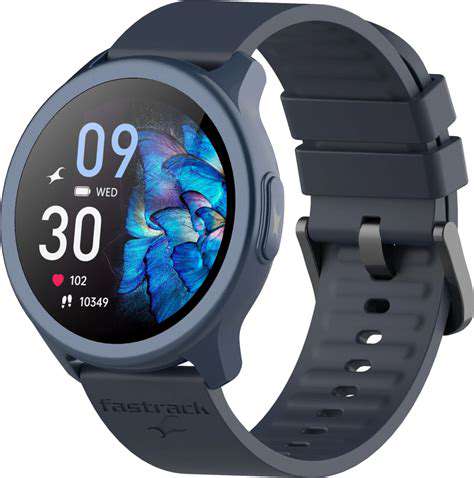The Future of Personal Transportation Beyond Cars (Hyperloop, eVTOL)
eVTOL Aircraft: Revolutionizing Urban Air Travel
Electric Vertical Take-Off and Landing (eVTOL) aircraft are poised to transform urban air travel, offering a faster, more efficient, and potentially more sustainable alternative to traditional ground transportation. These innovative vehicles promise to significantly reduce commute times, alleviate traffic congestion, and create new possibilities for urban mobility. The concept is gaining significant momentum, with numerous companies actively developing and testing these cutting-edge aircraft, signaling a potential shift in how we navigate our cities.
Imagine zipping across congested cityscapes, arriving at your destination in minutes instead of hours, without the hassle of traffic jams and parking. eVTOLs are designed to address these very challenges, offering a unique perspective on personal transportation in the coming decades.
Key Advantages of eVTOL Technology
One of the most compelling aspects of eVTOL aircraft is their potential to dramatically improve urban mobility. These vehicles promise a faster, more direct route to destinations, bypassing the limitations of traditional road networks. This translates into significant time savings for commuters, allowing them to dedicate more time to work, leisure, or personal pursuits.
Furthermore, eVTOLs are expected to reduce carbon emissions compared to traditional air travel within urban areas, contributing to a more sustainable future. The adoption of electric propulsion systems significantly diminishes the environmental footprint, which is a critical factor in the ongoing discussion surrounding urban air mobility.
Challenges and Considerations
While the potential benefits of eVTOL technology are substantial, several challenges must be addressed. Safety concerns, regulatory frameworks, and infrastructure development are crucial aspects that need to be carefully considered. Ensuring the safety of passengers and the surrounding environment is paramount during takeoff, landing, and flight operations. This necessitates rigorous testing, certification procedures, and ongoing research.
Infrastructure and Regulatory Landscape
The implementation of eVTOL technology hinges on the development of appropriate infrastructure. This includes designated airspace, charging stations for the aircraft, and potential landing zones within cities. Furthermore, the development of a comprehensive regulatory framework to govern the operation of these vehicles is essential to ensure safety and maintain order within urban air space. Establishing clear guidelines and regulations is critical for widespread acceptance and integration into urban environments.
eVTOL Design and Operational Aspects
The design of eVTOL aircraft is crucial for their success. These vehicles require innovative solutions to optimize their performance, efficiency, and safety. From lightweight materials to advanced propulsion systems, the development of cutting-edge technologies is essential for achieving the desired level of practicality and environmental friendliness. The operational aspects, including flight paths, landing procedures, and potential integration with existing transportation systems, need to be meticulously planned and tested.
The Future of Personal Transportation
The integration of eVTOL aircraft into the future of personal transportation presents a compelling vision for urban mobility. These vehicles hold the potential to reshape our cities, offering a seamless and sustainable alternative to traditional transportation options. The future will depend on successful collaboration between technology companies, policymakers, and urban planners to ensure a safe, efficient, and environmentally friendly transition. Significant investments in research, development, and infrastructure will be necessary to realize the full potential of eVTOL technology.

Read more about The Future of Personal Transportation Beyond Cars (Hyperloop, eVTOL)
Hot Recommendations
- Review: The New [Specific Brand] Smart Lock Is It Secure?
- Best Budget Studio Monitors for Music Production
- Top Flight Simulation Peripherals (Joysticks, Throttles, etc.)
- Top Portable Scanners for Document Management On the Go
- Reviewing the Latest Smart Air Purifiers for Your Home
- Best Portable Photo Printers for Travelers and Memory Keepers
- The Future of Personal Transportation Beyond Cars (Hyperloop, eVTOL)
- Top Network Monitoring Tools [Free & Paid Options]
- Understanding the Tech Behind mRNA Vaccines [A Look Inside]
- Guide to Choosing the Right Gaming Chair for Ergonomics



![Best Tablets for Drawing and Design [2025]](/static/images/25/2025-05/Budget-FriendlyTabletsforBeginners.jpg)
![How to Clean Up Your Computer with [Software Type]](/static/images/25/2025-05/OptimizingRegistryEntriesandDiskSpace.jpg)
![What Are NFTs and Why Are They Popular? [Explained]](/static/images/25/2025-05/TheRoleofSpeculationandInvestmentintheNFTMarket.jpg)
![How to Build Your First Website with HTML & CSS [Tutorial]](/static/images/25/2025-05/BeyondtheBasics3AAdvancedTechniques.jpg)



![Understanding the Ethics of Hacking [White Hat vs Black Hat]](/static/images/25/2025-06/GrayAreasandtheBlurredLines3ANavigatingtheSpectrum.jpg)
